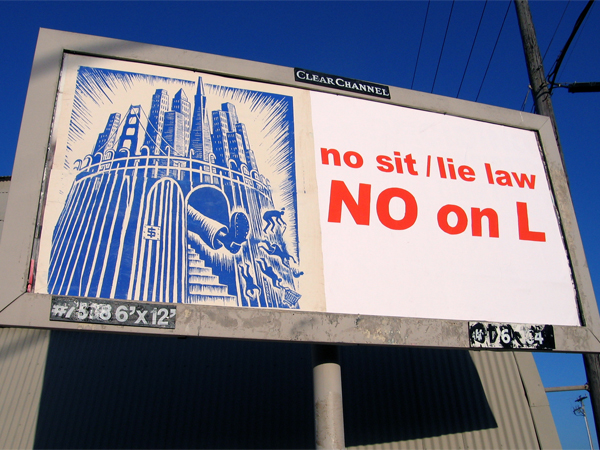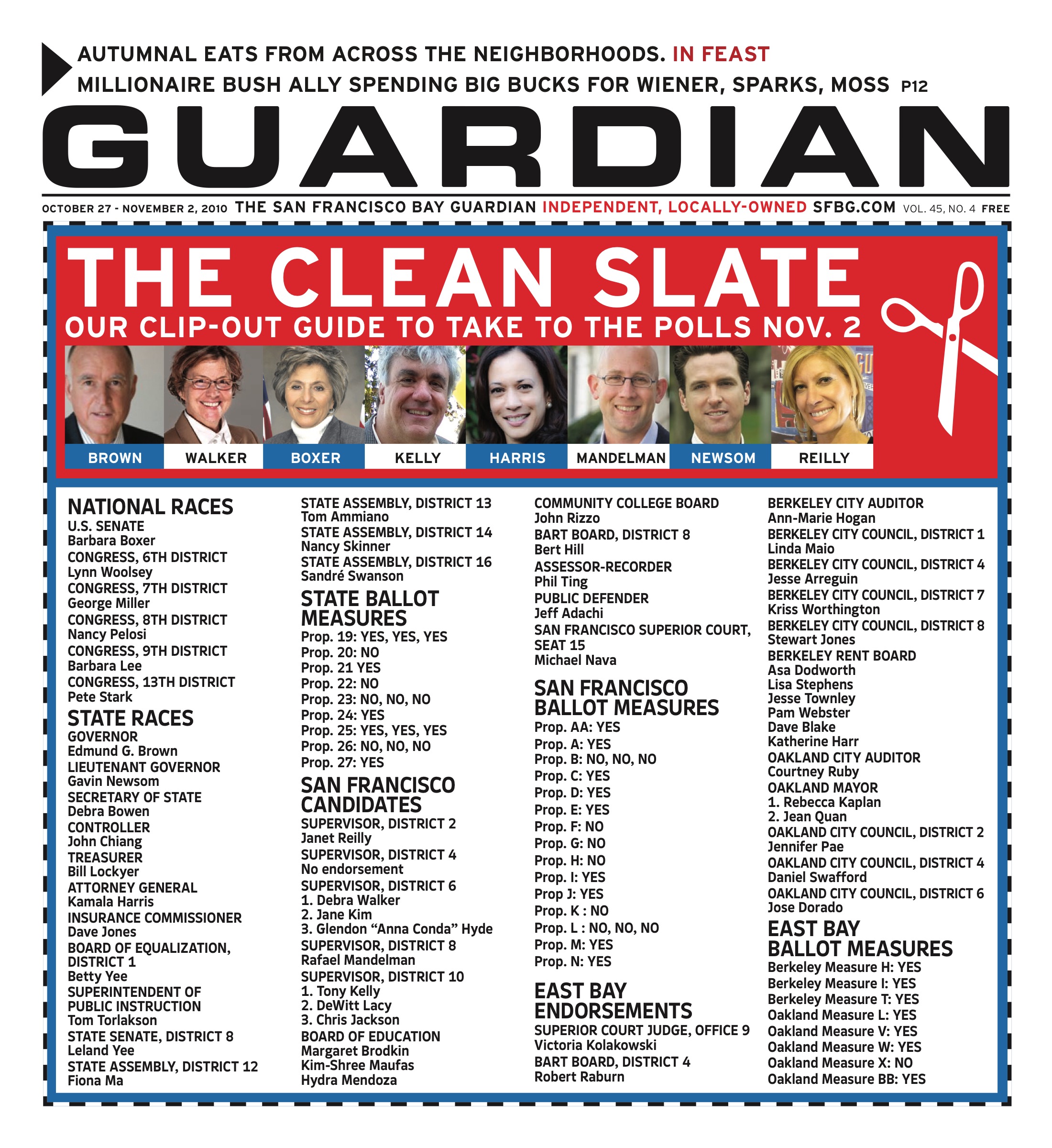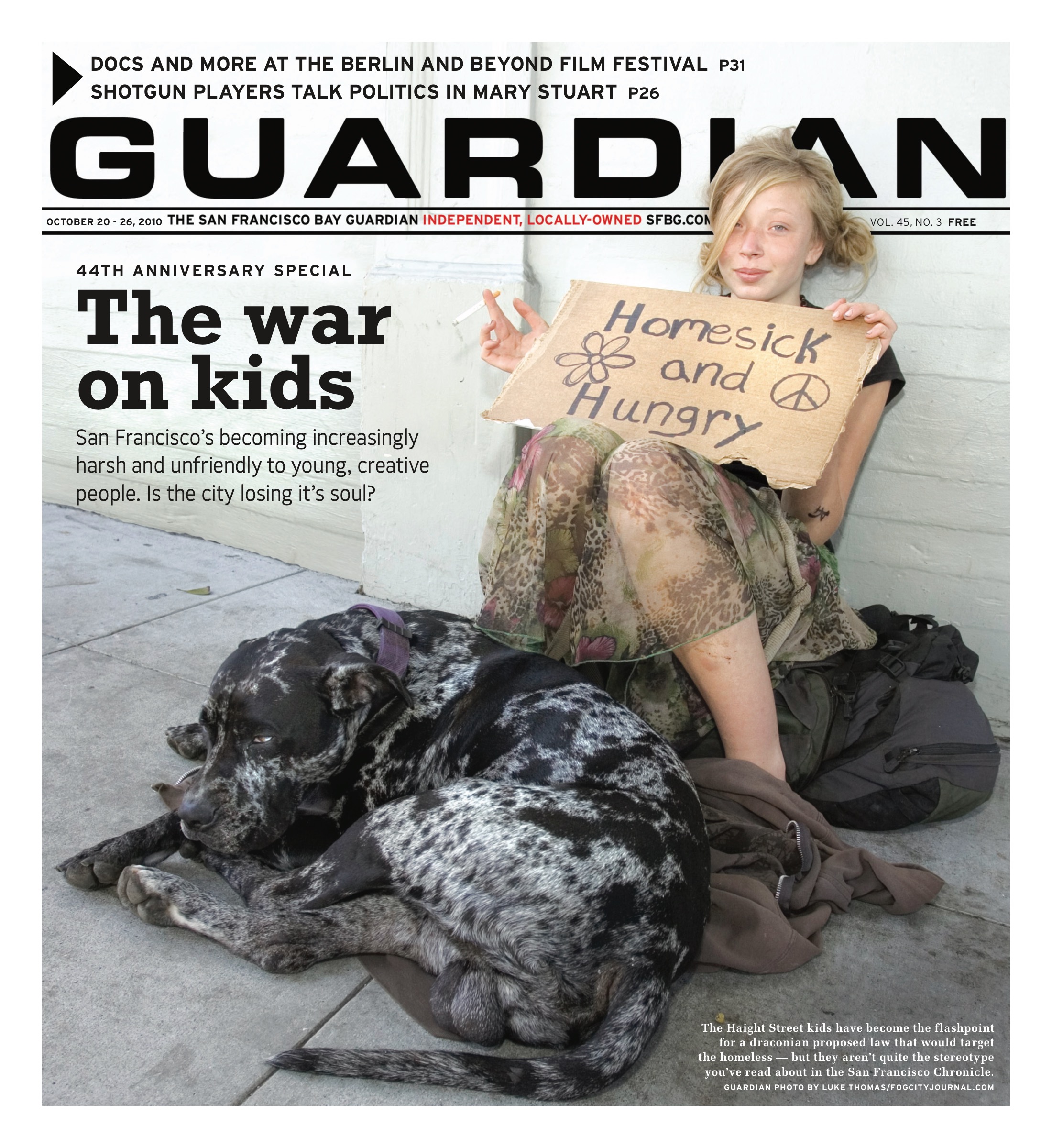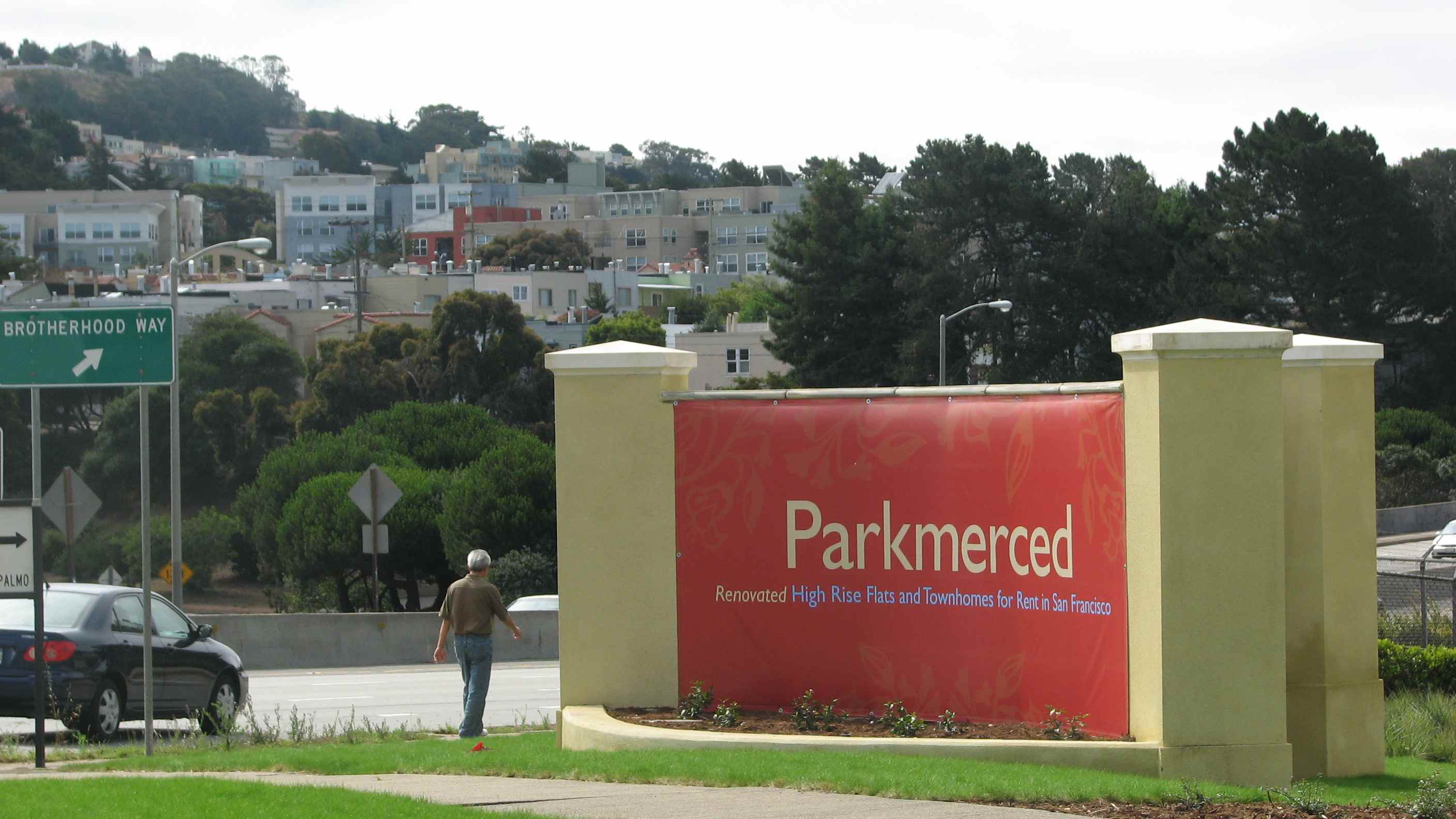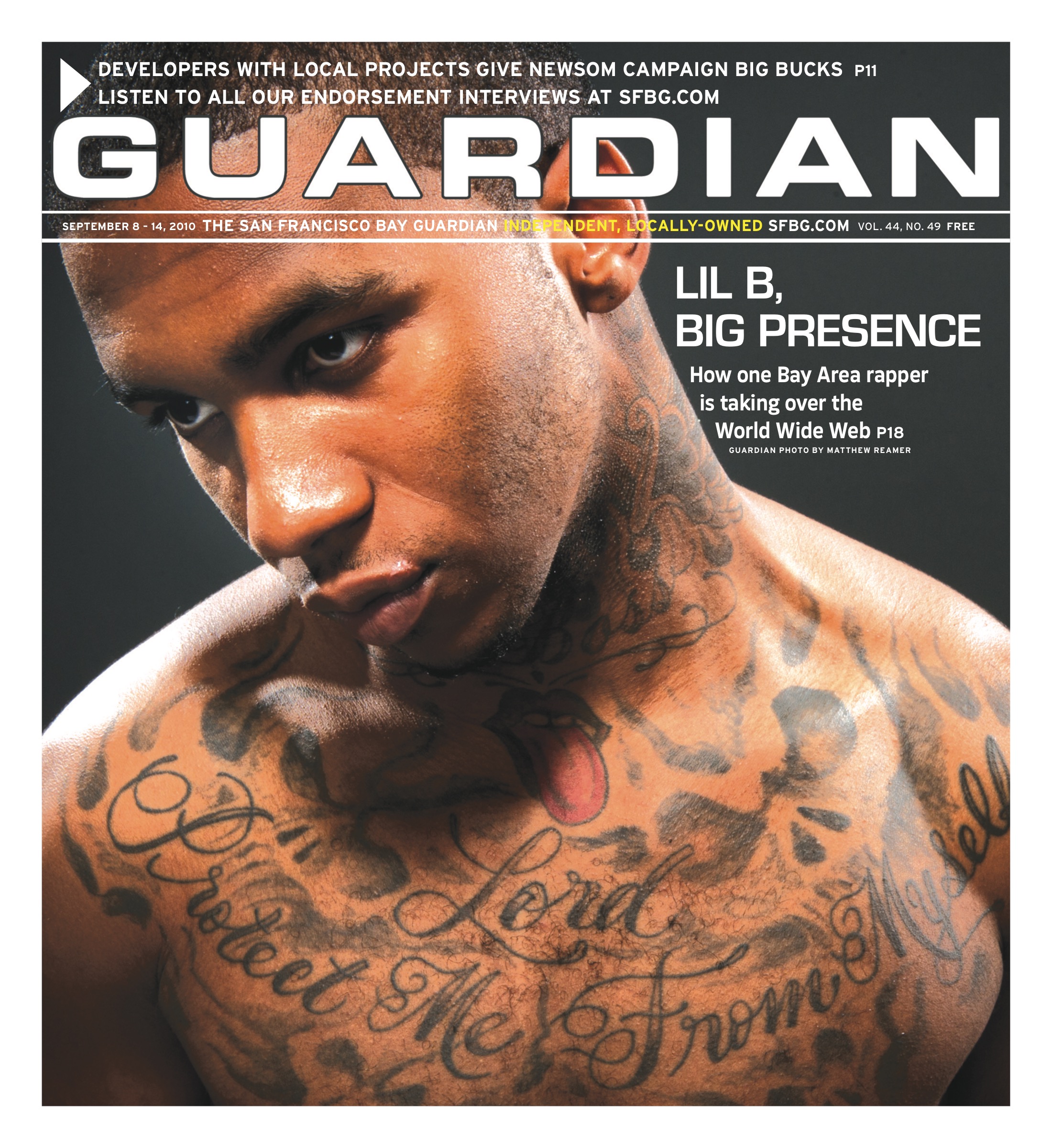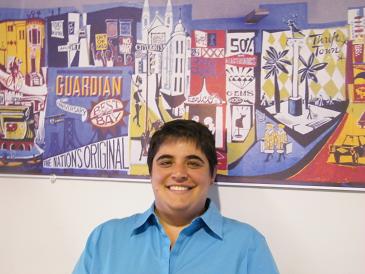rebeccab@sfbg.com
The world was a different place in 1976 when Carl Jensen, a professor of communications at Sonoma State University, founded Project Censored to highlight important national news stories that were underreported or outright ignored by the mainstream press.
Back then, there were few good alternatives to television networks or major newspapers and magazines, and stories omitted from those channels usually escaped public notice. There was no such thing as Google News, no one had ever heard of a blog, and the word “twitter” was associated with birds or gossip. So it was up to Project Censored to provide a fuller and more accurate picture of the news by delivering an annual rundown of the top 25 most significant articles that hadn’t been widely distributed.
But even if the corporate media was censoring important information back then, today’s highly fragmented media world has opened the floodgates to endless news and propaganda of every possible variety, leaving citizens awash in more information than they can possibly process.
The shared American narrative and agenda disappeared as the Internet boomed and newspapers shrank. While major media outlets have been consolidated into the hands of fewer corporations and the once stable media industry has been in flux, the general public has splintered into factions that seem to reside in disparate realities.
Extremism and the promotion of narrow corporate interests have gained footholds. Even on national television networks, personalities such as Glenn Beck are gaining traction by painting President Barack Obama as a dangerous radical, a Big Brother figure, or worse. Once-accepted imperatives like addressing global warming are undermined by seemingly legitimate news stories.
Yet the public is playing a bigger role than ever. Blogs abound, and nearly anyone can spark a public outcry by capturing egregious behavior on film with his or her cell phone. Thanks to a team of hackers who know a thing or two about encryption technology, WikiLeaks has emerged as a wild card of the new media landscape by cutting loose thousands of classified government documents and airing military footage never intended for a mass audience.
It’s a brave new world of media consumption, but Project Censored’s mission hasn’t really changed. More than ever, people need help sifting through this cacophony to figure out what they truly need to know.
For 35 years, the project has distributed its Censored list nationwide to shed light on the top stories not brought to you by the mainstream press. These days, stories are submitted, researched by students, filtered through LexisNexis to determine which outlets have covered them, and then voted on by a team of judges. An international network of 30 colleges and universities contributes to the project, and volunteers from around the world submit stories for consideration. At the end of each project cycle, the work is released in a compendium.
Past judges have included luminaries such as Noam Chomsky and the late Howard Zinn, to whom Censored 2011 (Seven Stories Press, 2010) is dedicated. Even journalist Walter Cronkite publicly stated, “Project Censored is one of the organizations that we should listen to, to be assured that our newspapers and our broadcasting outlets are practicing thorough and ethical journalism.”
Project Censored Director Mickey Huff, a history professor at Diablo Valley College who sports a long ponytail and a pointy beard and talks at an excited pace, uses air quotes when saying the phrase “news decisions” because his concern is censorship. But how does he define censorship?
“There are many factors afoot that prevent stories from getting reported,” he says. “What we’re saying is that anything that interferes with a free flow of information is censorship. It’s not the blacking out of a story, it’s the framing of a story. It’s the angle. It’s what views are being left out. In old school ‘objective journalism'<0x2009>” — air quotes — “you’re supposed to get both sides of the story. Yeah, well, sometimes there are six sides.”
The preface to Censored 2011 offers a harsh critique of mainstream news. “In America, unsubstantiated opinions, rumors, and gossip surrounding important issues masquerade as real news,” it states. “We live in a propaganda culture where factual information is routinely censored by degree.”
To be sure, public relations outfits and staged press events routinely influence the content of the daily news, and media watchdog groups often spotlight the fiction or egregious bias that finds its way onto the airwaves. Yet in a culture where truth is so often mangled and information so scattered — and the state of politics and the economy so frightening — both sides of the political spectrum have moved toward the fringes. And thumbing through Censored 2011, one wonders if Project Censored itself has wandered into uncharted territory.
Huff and former Project Censored director Peter Phillips recently coauthored an op-ed exploring the concept of State Crimes Against Democracy (SCADs), hoping to publish it through the Institute for Policy Studies (IPS), a progressive think tank based in Washington, D.C. To their dismay, IPS rejected it. Huff found the decision cruelly ironic — he felt he’d been censored.
Chapters 6 and 7 of Censored 2011 also delve into SCADs — a construct that seeks to buck the “conspiracy theory” label in favor of a more sophisticated framework. They are defined as “concerted actions or inactions by government insiders intended to manipulate democratic processes.” The introduction to the book alludes to those chapters as “beyond urgent,” and Kristina Borjesson equates a lack of mainstream media coverage of questions surrounding 9/11 — perhaps the mother of all SCADs, from the 9/11 Truth Movement’s perspective — as censorship.
Huff and Phillips noted that they are not part of the so-called 9/11 Truth Movement, arguing that urging mainstream coverage of that particular set of questions is just a small piece of their wider body of work. There are signs, however, that returning to that particular topic over the past several years has harmed some people’s perceptions of the project.
One person familiar with Project Censored noted that at least two former judges had parted ways over “the 9/11 fixation … a really weak link in the entire operation. It rearranges atomized factoids into theories.” Yet the project should still be viewed as valuable and relevant, this person added.
“There is absolutely no question that they’ve done extremely important work over the years,” noted Reese Erlich, a prominent journalist who has covered the Iraq war and won awards from Project Censored for his work in the past. “The mainstream media in this country are failing to report all kinds of issues.” Yet Erlich turns a critical eye onto the so-called 9/11 Truth narrative. “My biggest gripe is that by complaining there is a conspiracy … you take away from the ability of people to make positive change,” he noted. “It gives them all the power, and the people have none of the power.”
It’s clear that Project Censored is sensitive to the “conspiracy theorist” label, and as champions of free speech, the directors aren’t shy about addressing it head-on. The first item on the Investigative Research section of its website, for example, is a nearly 10,000-word article titled “Analysis of Project Censored: Are We A Left-Leaning, Conspiracy-Oriented Organization?”
Its self-analysis concludes that the organization is neither, but admits to a certain bias. “The bias of Project Censored seems to be quite simple,” it notes. “We promote protection of First Amendment rights in support of a truly free press, one that holds those in power, elected by the people or appointed, accountable.”
THE TOP 10 CENSORED STORIES OF 2009-2010
1. Buh-bye U.S. dollar as the global reserve currency?
Since the financial meltdown of 2008 sent a jarring ripple effect throughout the global economy, Russian President Dmitry Medvedev has been talking up the idea of an international market that doesn’t use the U.S. dollar as a global reserve currency. The dollar now holds the status of the predominant anchor currency held in foreign exchange reserves, securing the U.S.’s strategic economic position.
In July 2009 at the Group of Eight Summit in Italy, Medvedev underscored his call for a newly conceived “united future world currency” when he pulled a sample coin from his pocket and showed it off to heads of state, the Bloomberg news service reported. At a conference in the Russian city of Yekaterinburg in June 2009, world leaders from Brazil, India, and China listened as Medvedev made his case for a new global currency system anchored on something other than the dollar, according to an article in the Christian Science Monitor.
Additionally, the United Nations Conference on Trade and Development (UNCTAD) suggested in a report that the present system of using the dollar as the world’s reserve currency should be subject to a wholesale reconsideration, according to an article in the Telegraph, a British newspaper.
Michael Hudson, an author and professor of economics at the University of Missouri, links discussions about an alternative global reserve currency with U.S. military spending. Referencing Medvedev’s calls for a “multipolar world order,” Hudson offers this translation: “What this means in plain English is, we have reached our limit in subsidizing the United States’ military encirclement of Eurasia while also allowing the U.S. to appropriate our exports, companies, stocks, and real estate in exchange for paper money of questionable worth.”
2. Environmental enemy No. 1: U.S. Department of Defense
The U.S. military burns through 320,000 barrels of oil a day, Sara Flounders of the International Action Center reports, but that tally doesn’t factor in fuel consumed by contractors or the energy and resources used to produce bombs, grenades, missiles, or other weapons employed by the Department of Defense.
By every measure, the Pentagon is the largest institutional user of petroleum products — yet it has a blanket exemption in commitments made by the U.S. to curb greenhouse gas emissions. Despite its status as top polluter, the Department of Defense received little attention in December of 2009 during talks at the United Nations Climate Change Conference in Copenhagen.
Meanwhile, human health is threatened by the long-term environmental impacts of military operations throughout the globe. Depleted uranium contamination from the Iraq conflict has been linked to widespread health problems, Jalal Ghazi reports for New America Media. The Chamoru people of Guam, meanwhile, experience an alarmingly high rate of cancer, which is suspected to be linked to a nearby 1950s U.S. nuclear weapons testing site that left a legacy of radioactive contamination.
“The greatest single assault on the environment comes from one agency: the Armed Forces of the United States,” author Barry Sanders writes in The Green Zone: The Environmental Costs of Militarism.
3. Internet privacy and personal access at risk
Project Censored cites 13 sources, including articles published in Wired and Mother Jones, for this story, and a Google search for the phrase “Internet kill switch” yields 539,000 results generated by more recent reporting.
The Cybersecurity Act was proposed in June 2009, giving the president the power to “declare a cybersecurity emergency” and do whatever is necessary to diffuse a cyber attack. The Senate Homeland Security Committee approved a comprehensive cybersecurity bill this past June, which has drawn sharp criticism for including a provision that would allow the president to shut down networks in the event of an emergency.
Reporting in Wired, Noah Schachtman broke the story that the CIA was investing in Visible Technologies, a software firm that can collect, rank, and analyze millions of posts on blogs, online forums, Flickr, YouTube, Twitter, and other social media sites. Wired also reported that the Obama administration had followed the lead of George W. Bush by urging a federal judge to set aside a ruling in a spy case weighing whether a U.S. president can bypass Congress and establish a program of eavesdropping on Americans without warrants.
4. ICE’s secret detention centers
The federal office of Immigration and Customs Enforcement (ICE) is confining people in 186 unlisted and unmarked subfield offices, many in suburban office parks or commercial spaces that reveal no information about their ICE tenants. Reporting in The Nation, Jaqueline Stevens describes ICE’s jail network and the agency’s penchant for secrecy when it comes to withholding public information about the facilities. “The absence of a real-time database tracking people in ICE custody means ICE has created a network of secret jails,” Stevens writes. “Subfield offices enter the time and date of custody after the fact, a situation ripe for errors … as well as cover-ups.” As a result, detainees can literally be “lost” by attorneys or family members for days or weeks at a time after being transferred.
5. Blackwater in Pakistan
The notorious private military contractor Blackwater has changed its name to Xe Services, but it hasn’t escaped scrutiny. According to a story that ran in The Nation in December 2009, the contractor is at the center of a covert program in Pakistan run by the U.S. Joint Special Operations Command (JSOC) in Karachi. Xe is involved in planning targeted assassinations of suspected Taliban and Al Qaeda operatives, and helps direct a U.S. military drone bombing campaign that runs parallel to the well-documented CIA predator strikes, according to a well-placed source within the U.S. military intelligence apparatus who spoke with the Nation. The Pentagon has disputed the claim, stating: “There are no U.S. military strike operations being conducted in Pakistan.” More recently, The New York Times reported that Xe had created a web of more than 30 shell companies to win defense contracts, and specifically mentioned that the company employees had loaded bombs and missiles onto predator drones in Pakistan.
6. Cause of death: lack of health care
As the health care debate raged on and Americans heard over and over again about supposed “death panels,” “Obamacare,” and the government’s infringement on personal freedom, at least one important study was largely drowned out. Research led by the Johns Hopkins Children’s Center revealed that lack of health insurance may have figured into 17,000 childhood deaths among hospitalized children in the United States in the span of less than two decades.
The results of a study published in the Journal of Public Health compared more than 23 million hospital records from 37 states between 1988 and 2005, and found that uninsured children in the study were 60 percent more likely to die in the hospital than those with insurance.
“Can we say with absolute certainty that 17,000 children would have been saved if they had health insurance? Of course not,” notes a co-investigator. “From a scientific perspective, we are confident in our finding that thousands of children likely died because they lacked insurance or because of factors directly related to a lack of insurance.”
7. The African land grab
A “land grab,” according to this Project Censored story, is the purchase of vast tracts of land by wealthier nations from mostly poor, developing countries in order to produce crops for export. Throughout the African continent, an estimated 50 million hectares of land either have been acquired or are in the process of being negotiated for purchase over the last several years, with international agribusinesses, investment banks, hedge funds, and commodity traders leading the rush for cheap, undeveloped, arable land.
Ethiopia has approved at least 815 foreign-financed agriculture projects since 2007, but the food produced there will be exported rather than used to feed the 13 million people in need of food aid in that country. “Rich countries are eyeing Africa not just for a healthy return on capital, but also as an insurance policy,” notes researcher Devlin Kuyek. “Food shortages and riots in 28 countries in 2008, declining water supplies, climate change, and huge population growth together have made land attractive. Africa has the most land and, compared with other continents, is cheap.”
8. Massacre in Peruvian Amazon over Free Trade Agreement
While the story highlighted by Project Censored is titled, “Massacre in the Amazon,” a later installment by Laura Carlsen, the translator, appeared in the Huffington Post titled “Victory in the Amazon.” The story centers on a movement standing its ground even with tragic loss of life as the consequence: On June 5, 2009, 50 or more Peruvian Amazon Indians were massacred after a 57-day protest against the implementation of decrees under the Free Trade Agreement (FTA) with the United States. Decrees that would have opened vast swaths of indigenous land in the Peruvian Amazon to private investment by gas, mining, and oil companies prompted Amazon peoples to block highways and gas and oil pipelines. But the conflict escalated when armed Peruvian government agents attacked the protesters with rifles and, according to eye witnesses, burned bodies and threw them into a river. According to Carlsen’s account, Peru’s Congress voted 82 to 12 in the aftermath to repeal two of the decrees that the indigenous groups had been standing against. Daysi Zapata, a representative of the association of indigenous groups, celebrated the triumph: “Today is a historic day. We are thankful because the will of the indigenous peoples has been taken into account, and we just hope that in the future, the governments attend and listen to the people, that they don’t legislate behind our backs.”
9. Human rights abuses continue in Palestine
While there is a great deal of news coverage about the Israeli-Palestinian conflict, Project Censored highlights human rights abuses as a little-discussed aspect. After a 15-month study conducted by an international team of scholars, the Human Sciences Research Council of South Africa concluded that Israel is, from the perspective of international law, an occupying power in Palestinian territories and that it has become a colonial enterprise that implements a system of apartheid. An Amnesty International report charges that Israel is denying Palestinians the right to access adequate water by maintaining total control over the shared water resources and pursuing discriminatory policies. And articles that appeared in Electronic Intifada detailed how Israel had begun barring movement between Israel and the West Bank for those holding a foreign passport, including humanitarian aid workers and thousands of Palestinian residents. Project Censored’s introduction touches on the topic: “Rare mainstream media glimpses of Israel’s apartheid system, like the CBS 60 Minutes segment ‘Is Peace Out of Reach?’ in January 2009, air and then fade away after drawing vitriolic, selectively focused criticism.”
10. U.S. funds and supports the Taliban
While this story appeared on the front pages of The New York Times and Washington Post, Project Censored claims they omitted some key facts. The Nation broke the story, and at the time Project Censored was researching it, there was nary a mention in the mainstream media of how American tax dollars wind up in the hands of the Taliban. In some cases, money goes to Afghan companies run by former Taliban members like President Hamid Karzai’s cousin, Ahmad Rate Popal, who was charged in the 1980s with conspiring to import heroin into the United States. U.S. military contractors in Afghanistan also pay suspected insurgents to protect supply routes. “It is an accepted fact of the military logistics operation in Afghanistan that the U.S. government funds the very forces American troops are fighting,” according to The Nation story, written by Aram Roston. The Nation article also highlighted a link omitted by the other publications: NCL holdings, a licensed security company in Afghanistan, is run by the son of the Afghan defense minister and has an influential former CIA officer, Milton Bearden, on its advisory board. NCL secured a highly lucrative trucking contract — despite having no apparent trucking experience.
Project Censored celebrates the release of Censored 2011 at City Lights Bookstore in San Francisco on Thursday, Sept, 16 at 7:00 p.m. To learn more, visit www.projectcensored.org.

